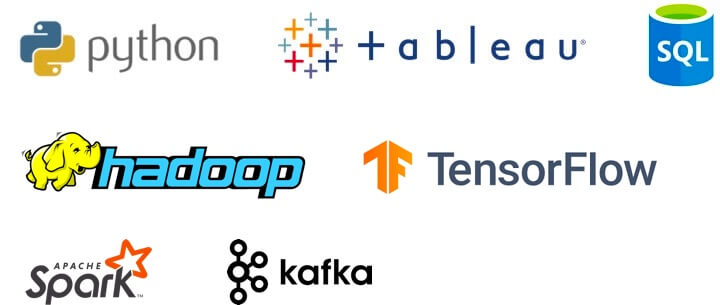Machine Learning is an important subset of Artificial Intelligence. The module of Machine learning will teach us Machine Learning techniques and all the popularly used in Classical ML algorithms that fall in each of the categories.
Below are the various concepts of Machine Learning you would master in this module of the Artificial Intelligence training.
- Supervised Regression
Regression is a supervised learning technique that assists in finding the relationship between variables and facilitates us to predict the continuous output variable based on one or more predictor variables. In this sub module, you will learn about Supervised Regression.
- Exploratory data analysis
As the name suggests, The concept of Exploratory Data Analysis or EDA revolves around exploring data. Data Exploration is of three types. They are Data Summarization, Data Visualization, and Data Normalization. In this sub-module, you would learn several EDA techniques. In this sub module, you will learn about Exploratory Data Analysis.
- Linear Regression (LR)
Linear Regression is applied to forecast the outcome that is continuous and has a constant slope within a continuous range. In this sub module, you would learn the several techniques of Linear Regression. In this sub module, you will learn about Linear Regression.
- Statistical Significance of LR
The likelihood ratio refers to the probability of accurately predicting disease in ratio to the probability of inaccurately predicting disease. In this sub module, you will learn about Statistical Significance of LR.
- Feature engineering
Feature engineering refers to the process of applying domain knowledge to extract traits such as characteristics, properties, attributes and more from the given raw data. In this sub module, you will learn about Feature Engineering.
- Regularization Techniques
Regularization is a procedure that makes inadequate adjustments to the learning algorithm such that the given model renders better results.In this sub module, you will learn about Regularization Techniques.
- Model deployment
Model deployment is an engineering task employed for putting a Machine Learning model to use. In this sub module, you will learn about Model deployment.
- Supervised Classification
Supervised classification allows the user to select sample pixels in an image that are illustrative of specific classes and then direct the image processing software to use these. In this sub module, you will learn about Supervised Classification.
- Logistic Regression
In statistics, the logistic regression model is used to define the probability of a definite class or event existing such as true/false. In this sub module, you will learn about Logistic Regression.
- K-Nearest Neighbours
In this sub module, you will learn about K-Nearest Neighbours.
- Decision Trees
Decision trees are used to investigate the models as they aid effective decision-making. A decision tree is a support tool that uses a tree-like pattern of decisions and possible consequences, including accident event outcomes, resource costs, and service. In this submodule, you will also learn about Decision Trees.
- Ensemble Techniques
Ensemble techniques offer multiple models and then merge them to produce improved results. Ensemble techniques usually deliver the most reliable solutions than within a single model. In this submodule, you will also learn about Ensemble Techniques.
- Naive Bayes
Naive Bayes is a classification technique executed based on Bayes' Theorem which uses an assumption of independence among predictors. In this submodule, you will also learn the several techniques of Naive Bayes
- Model Improvement
In this sub module, you will learn about the several techniques employed in Model Improvement.
- Unsupervised Model
An unsupervised model is a type of machine learning model in which the model is not given any pre-assigned tags for the training data. In this sub module, you will learn about Unsupervised Model.
- Clustering Techniques
Clustering is an important technique of Machine learning. It is the task of splitting the number of data points into several groups. In this submodule, you will learn several techniques of Clustering.
- K-means algorithm
K-Means Clustering is an Unsupervised Learning algorithm, which gathers the unlabeled dataset into different clusters. In this sub module, you will learn about K-means algorithm
- Hierarchical Clustering
Hierarchical clustering is an algorithm that gathers similar elements into groups called clusters. In this sub module, you will learn about Hierarchical Clustering
- Dimensionality Reduction
Dimensionality reduction refers to the tools and techniques applied for transformation of a given data from a high-dimensional space into a low-dimensional space. In this sub module, you will learn about Dimensionality Reduction.
- Recommender system
Recommender system is an important application of AIML in which the systems try to recommend products and services to the user based on many different factors such as past purchases, search history and more. In this sub module, you will learn about the Recommender System.
- Market Basket Analysis
Market basket analysis is a data mining technique used to understand a customer's behaviour and boost sales. In this sub module, you will learn about Market Basket Analysis.











 and more...
and more...


















 5,00,000*
5,00,000*





